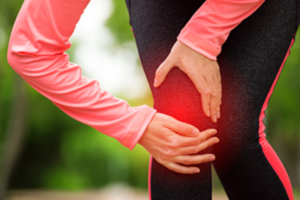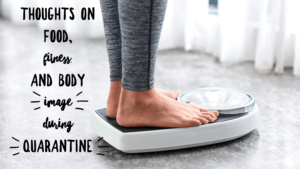Exercise Series: Squats
Exercise Series: Squats
The first in our exercise series covers one of the most fundamental lifts: The squat. This is an exercise that simulates and helps to build strength for multiple functional movements like running, jumping, walking, stairs, picking up your children, and even getting on and off the toilet. Staying strong with a squatting movement helps you keep up with life while you’re young and helps you stay independent as you age.
The squat is a great multi-joint exercise that you can use to increase range of motion and build full body strength. This is why it is a mainstay of almost any strength program. There is a lot of misinformation around the squat and we are here to talk about squatting safely and get more people interested in this exercise.
Form
We’ve got great news! There is no need to pay super close attention to squat form for most of us. There is no one perfect squat. Form becomes important when we are getting near our max lift as proper form will give you a mechanical advantage and reduce your risk for injury, but outside of that it isn’t very important.
Everyone has variations in the anatomy of their hips as well as knee and ankle flexibility. These variations can affect form when completing a complex lift like the squat: So how can we say there is only one way to properly perform a squat?
There is little evidence to support that idea that improper form can directly lead to an injury.
- If you aren’t sure on your form, that’s ok
- The more you do it, the better you will get
- If you need to turn your ankles out for comfort or can’t get as low as you’d like, it’s fine
- The dreaded “buttwink” is when your pelvis tucks under you at the bottom of your squat, which is also totally normal for most people
Tips and tricks
- Start with a comfortable weight for YOU, not the person next to you lifting an absurd amount of weight in the gym. We all have our own starting points.
- We recommend going to at least 90 degrees of knee flexion with your squat if you can comfortably get there with your heels flat on the floor.
- If it’s between more weight or more depth, we recommend more depth. Your muscles will only adapt to the ranges you work them in. That means if you squat to 45 degrees of knee flexion with a lot of weight, you will get very strong in this range. Outside of this range though, you will likely be significantly weaker.
- Once your ideal depth is achieved, you can begin progressing the weight
- Select the type of squat and depth that will help you reach your goal for training.
- Box squats may be best to help work on getting in an out of a chair
- Split squats are beneficial for sports requiring single leg explosive movements like sprinting and ice hockey
- BREATHING: Breathe in while you are descending in the squat and breathe out when ascending out of the squat
- You should not hold your breath during the squat unless you are trained in doing this to prevent fainting and extreme increases in internal pressure
Common form issues
- Knees collapse in when squatting
- Cause: Poor glute activation
- Fix 1: by thinking about rotating your feet outward against the ground. Your feet shouldn’t move, but this will help activate the glutes to prevent valgus
- Fix 2: Put an exercise band around the tops of your knees and actively resist
- Too much forward trunk lean
- Cause: Usually due to performing the squats with more weight than your quads can tolerate. The hip hinge will recruit more glutes and hamstrings during the movement
- Fix: Use less weight and progressively overload to quads tolerance
- Weight shift to one side
- Cause: Painful hip or knee; poor ankle flexibility on one side; reduced strength on one side
- Fix 1: Use mirrors: They’re not for admiring yourself, they’re for assisting with proper form
- Fix 2: Place a small riser under the foot of the side you are shifting towards
- Fix 3: Do split squats to increase single leg strength on deficient side.
Benefits
- Squatting is a great way to improve your range of motion over time. You’ll see in our video Bryan is doing a deep squat and loading through his full range of motion. But If you can only manage a half squat to start, that’s ok.
- Squats will increase lower body and core strength with a progressive training program
- Squatting is a movement pattern that is used in most things we do throughout the day, so these things will likely become easier with increased training.
- They will make you feel great by releasing feel good endorphins, helping you both physically and mentally.
Squat Variations
There are as many variations of squats as your imagination can come up with. Front squats, back squats, box squats, sumo squats, belt squats, goblet squats, split squats, starter squats… Below are some common variations that we use with our patients and athletes.
Back Squat
- Grasp the bar with a closed pronated grip
- Step under the bar with your feet at a comfortable width
- You can use either the high bar or low bar position
- The high bar positions the bar above your posterior deltoids and at the base of the neck
- The low bar positions the bar across the posterior deltoids and in the middle of the trapezius
- Lift your elbows and hold your chest up and out to create a shelf for the bar using the upper back and shoulder muscles
- Extend your knees and hips to lift the bar and take one or two steps backward
- Position your feet roughly shoulder width apart
- As you squat, keep your back neutral and your chest up. Keep your heels flat on the floor. Maintain this position on your way back up as well.
- Slowly lower yourself as low as you can control and then return to the starting position in a slow controlled motion and repeat with the desired amount of reps
Benefits and Uses
- Is there anything the squat doesn’t do for your body?!?
- Helps to build whole body strength, especially in the quads, glutes and hamstrings
- Builds core strength and stability
Box Squat
- Form for this movement is similar to the regular squat, except you are sitting and then getting back up from a surface (usually a bench)
- They key to performing this movement is the subtle hip hinge when sitting and standing
Benefits and Uses
- Simulates getting out of chair, off toilet, or out of a car
- Will help improve core strength and stability
- Moves bias more to glutes and hamstrings
Sumo Squat
- Load the bar on your shoulders as you would with the back squat
- Place feet roughly shoulder width with toes turned out about 30 degrees
- Squat as low as you can then return to the starting position
Benefits and Uses
- A great movement for beginners
- More comfortable on painful hips that have impingement type symptoms
- Aids in making the movement more stable for those at risk for falls
Split Squat
- Grasp the bar in the same position as with the back squat
- Place one foot flat on a bench, not on live toes
- Ensure that your front foot is forward enough that your tibia doesn’t move too far forward when dropping into the squat
- Squat by dropping your back knee straight towards the ground slowly
- Push up from the down position by extending the knee and hip on the front leg
Benefits and Uses
- Good for correcting strength discrepancies between sides
- Useful for sports requiring single leg strength and power (sprinting, long jump, ice hockey)









